Yes, you can sand engineered hardwood, but it has a limited number of sandings due to the thin veneer. Professional sanding is recommended. Always follow the manufacturer's guidelines to avoid damaging the floor.
Embarking on a home renovation journey often leads to the question of refinishing engineered hardwood floors. The allure of revitalizing your space is undeniable, but the uncertainty lingers: Can you sand engineered hardwood? Join me on a firsthand exploration as I share my experience and insights into whether sanding is a viable option for engineered hardwood. Discover the dos and don'ts, and let's unveil the secrets to breathing new life into your engineered hardwood flooring.
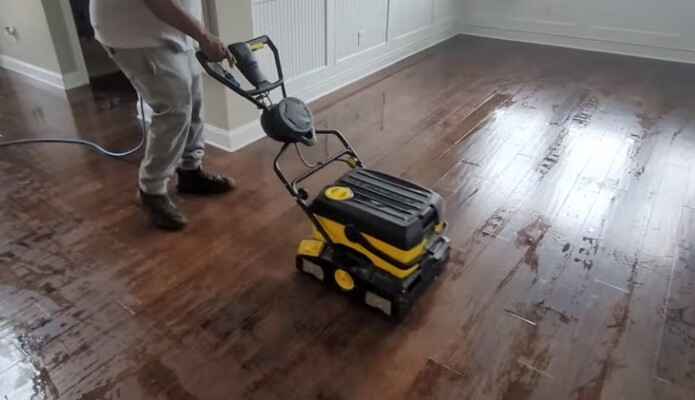
What is engineered hardwood flooring, and how is it different from traditional hardwood flooring?
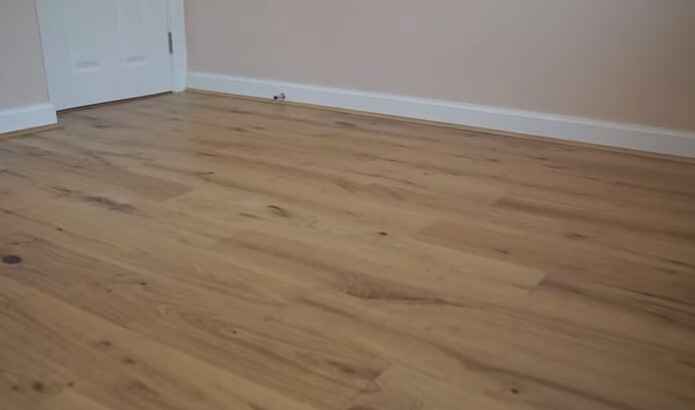
Engineered hardwood flooring is a popular choice for homeowners who want to enjoy the look of traditional hardwood without the hassle. Unlike solid hardwood flooring, engineered hardwood is made of several layers of wood that have been pressed and glued together. This creates a more stable and durable flooring option.
Engineered hardwood also offers more versatility than traditional hardwood, as it can be installed below grade and over concrete subfloors - something that cannot be done with solid hardwood. Additionally, engineered hardwood has a veneer layer on top made from natural wood and can be sanded and refinished multiple times if desired. This allows homeowners to enjoy the same beautiful look of traditional hardwood flooring with increased durability, stability, and flexibility.
How to sand engineered hardwood?
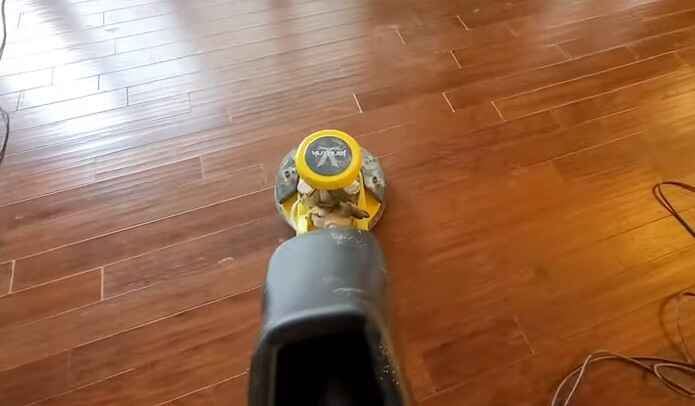
Engineered hardwood floors offer a great way to add the beauty of wood to any room. Like any other hardwood floor, they must be sanded periodically. Sanding them requires a bit of skill and specialized tools found in most hardware stores.
Here's a step-by-step guide on how to sand engineered hardwood floors.
Step 1: Preparing the Room
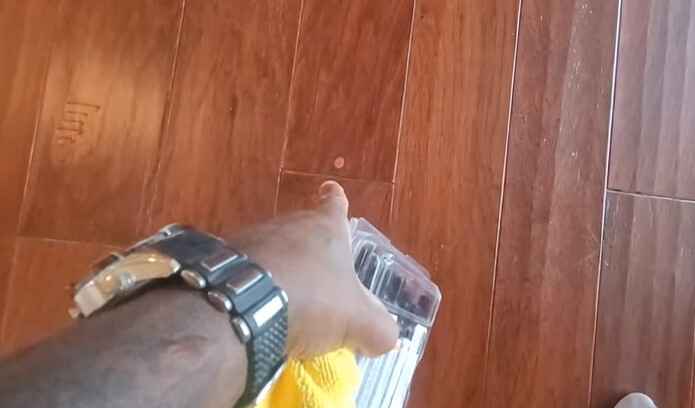
Before you begin sanding, preparing the room for the job is essential. Vacuum any debris from the floor and remove any furniture from the area. If you have carpets, you'll need to remove them as well. It's also a good idea to open windows for ventilation and wear protective clothing such as a dust mask and goggles.
Step 2: Getting Started with Sanding
Once the room is ready, it's time to sand the engineered hardwood floor. Start using coarse grit paper on your sander, then gradually work to finer grits until you reach the desired finish. Make sure to move slowly to get even sand while avoiding gouging the wood. After each pass, use a vacuum cleaner or broom attachment to collect excess dust particles.
Step 3: Applying a Stain or Polyurethane
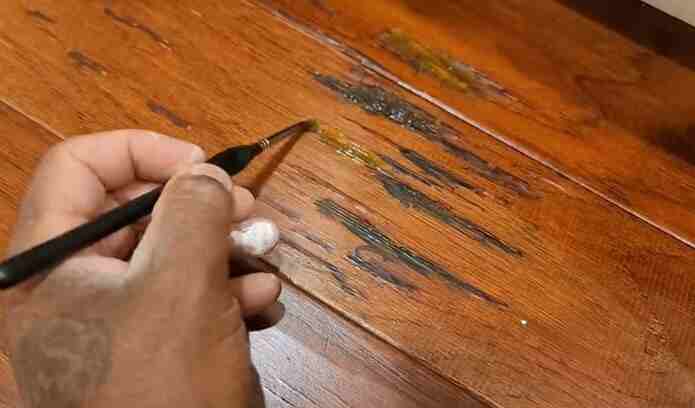
Once you've finished sanding, it's time to apply a stain or polyurethane. Begin by wiping the floor with a damp cloth to remove any remaining dust particles. Once the floor is dry, use a brush or roller to apply the stain or polyurethane and let it dry for at least 24 hours before walking on it.
Step 4: Finishing Up
The final step of sanding engineered hardwood floors is to finish up. Replace any furniture removed from the room and vacuum the area once more to pick up any stray dust particles. Now your engineered hardwood floors are ready for years of beautiful wear!
Follow these steps to sand engineered hardwood floors like a pro. With the right tools and patience, you can make your floor look as good as new in no time!
What type of finish can be applied to engineered hardwood?
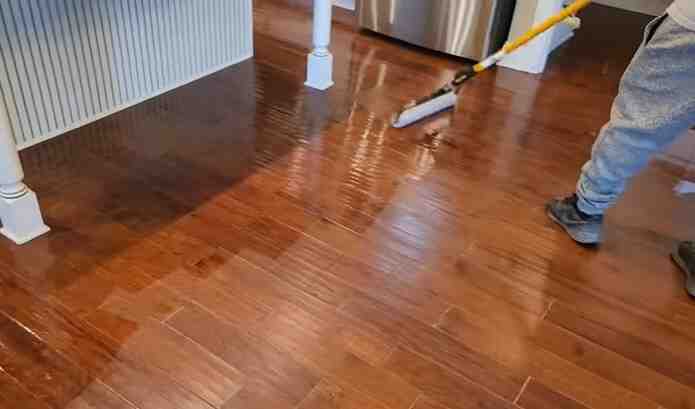
Engineered hardwood is an excellent choice for many homeowners because of its durability and beauty. It is essential to pick the correct type of finish to keep it looking its best.
Most engineered hardwood floors should be finished with a urethane-based finish, which will help protect the floor from moisture and scratches. Urethane-based finishes are available in oil- and water-based varieties, so you can choose the one that best meets your needs.
Oil-based finishes are usually more durable and provide better scratch resistance, while water-based finishes provide better stain resistance. For optimal protection, you should apply two coats of finish and let it cure for several days before use.
Regular maintenance, such as vacuuming and mopping, helps keep your engineered hardwood floor looking its best. With proper care, it can last for many years.
What are the benefits of sanding engineered hardwood?
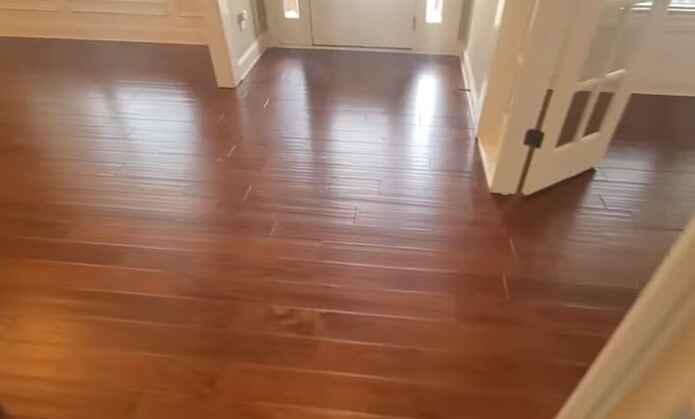
Engineered hardwood flooring is a great choice for many homeowners. With its layers of wood and durable construction, it's designed to last longer than traditional hardwood.
Sanding engineered hardwood is a great way to maintain its longevity and keep it looking as good as new for years to come. Here are five benefits of sanding engineered hardwood:
1. Reviving the Finish
By reviving the finish, sanding down your engineered hardwood floor can give it a new look. Whether you're looking to update an existing stain or change the color entirely, sanding can produce a smooth surface ready for whatever type of finish you choose.
2. Repairing Damage
Scratches and dents in wood floors can happen over time, but with sanding, you can easily repair them without having to replace sections of your flooring. Sanding eliminates the Damage and gives you a level surface to work with.
3. Enhancing durability
Engineered hardwood floors are designed for durability, but sanding them can increase longevity and protect against daily wear and tear. By removing the old finish, sanding helps keep the top layer of wood sealed and better equipped to withstand moisture or dirt buildup that can lead to warping or breakage down the line.
4. Increasing Comfort
Over time, boards in an engineered hardwood floor may become loose or uneven, leading to discomfort when walking or even standing on them. Sanding is a great way to restore those boards and even out the flooring, making it softer and more comfortable underfoot.
5. Enhancing Aesthetics
The most obvious benefit of sanding engineered hardwood is that it can make your floors look brand new again. Plus, if you decide to change the color or stain, sanding will give you a clean slate to work with and ensure your finished product looks beautiful for years to come.
Final Words
In conclusion, sanding engineered hardwood is possible but is not necessarily recommended. This type of wood is generally made with a lesser quality surface product than solid all-natural hardwoods, and the layers may need to be filled before sanding.
Additionally, the density of engineered wood is often lower than solid hardwood, meaning that you may need to use a light touch and take more care to ensure even results.
Prolonged exposure to water can also cause significant problems when sanding engineered woods, as they are not as resistant to Damage and warping once installed.
While it might work out okay in certain instances, it's best to consult with an experienced professional when sanding engineered hardwood.